Inclusion
Pilgrims’ Way Primary school prides itself on being an inclusive and diverse primary school which teaches pupils from the ages of 3-11.

We value each pupil’s uniqueness, and their differences are recognised and celebrated.
Our inclusive approach means that we have carefully considered how we provide an irresistible, broad and balanced curriculum that meets the needs of all our pupils.
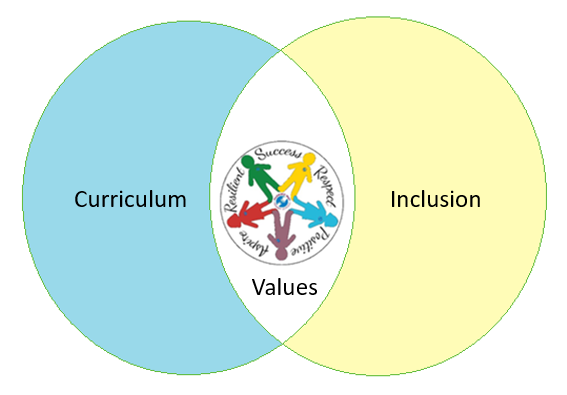
By teaching an irresistible curriculum through inclusive practice, underpinned by our school values, pupils are confident, have high wellbeing, enjoy learning, make progress and achieve at Pilgrims’ Way.
We have highly skilled and trained staff who are knowledgeable in teaching and supporting the learning of our children. Our learning environments are welcoming, calm, organised and stimulating. Our pupils succeed through Quality First Teaching. The Mainstream Core Standards are used to create a core offer of approaches and strategies tailored to each class or individual’s needs and abilities. This support enables children to access the curriculum, with learning scaffolded to support learners’ diverse needs. The curriculum is designed to make learning relevant and meaningful by embedding context, firsthand experiences and activating pupil’s prior knowledge. Pupils are given opportunities to demonstrate their learning through cultural and personal links.
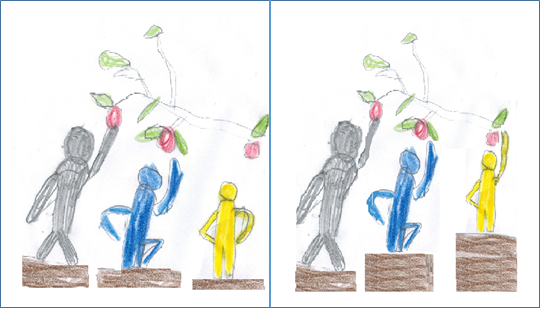
It's not about pupils getting the same. It's about pupils getting what they need!
Provision outside of class is considered for brief periods to meet specific needs e.g. through use of forest school, Drawing and Talking work, speech provision. All teaching opportunities are designed to develop language and literacy so that pupils become fluent in both the social and academic language of the primary curriculum.
The Inclusion Team
Our Inclusion Team has been developed to widen the school's offer of support to children and their families. The team is lead by Mrs Watts, the Inclusion Lead and SENCo. The team have specialist skills and knowledge and work closely with outside professionals. They offer coaching in best practice for all children to other members of staff. They support with modelling strategies and interventions and monitor provision. They also undertake pupil assessments and support children across the school with targeted and personalised support.
Mrs Smith is a SENCo and leads support for cognition and learning.
Mrs Walsh, Miss Redman and Miss Potts lead support for speech, language and communication needs.
Helen our FLO, Mr Walsh, our Forest School lead and Mrs Anderson all provide social, emotional and mental health support for children.
We work closely with parents and carers to actively support their children’s learning and wellbeing.
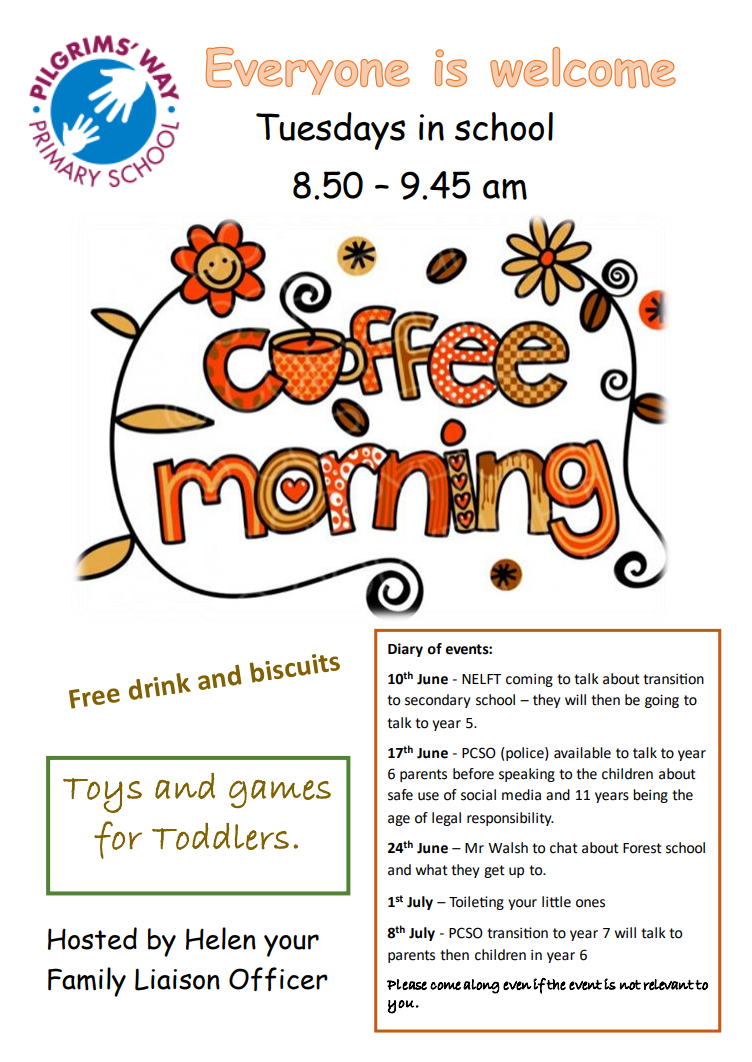
Olivia Watts is happy to meet with parents regarding any queries, specific needs or concerns. She can be contacted via the school office or email: olivia.watts@pilgrims-way.kent
Please click on the links on the right for further information on Special Educational Needs and Disabilities (SEND), Bilingual and Multilingual Learners and Young Carers.
Useful links
The Mainstream Core Standards
The Mainstream Core Standards guide for parents
Find ways to support your child’s development and to help them be happy and healthy
https://family.kentcht.nhs.uk/
https://family.kentcht.nhs.uk/baby/getting-ready-for-school-4-to-5-years/
https://family.kentcht.nhs.uk/child/
The following websites provide parents with FREE speech and language advice, resources and activities:
Early Years-Supporting your child's language skills- https://www.bbc.co.uk/tiny-happy-people
How we use Assistive Technology in school
Pilgrims’ Way has been awarded an ‘Innovator’s in Assistive Technology’ badge. This means that staff have been recognised for embracing assistive technology (AT) to support teaching within everyday classroom practice. AT can help to remove barriers to learning, support learners to work more independently and allow them to demonstrate their knowledge, skills and understanding in different ways. For example, where a pupil may struggle to read independently, using a ‘text to speech’ feature lets them read any text they choose. Similarly, by using 'speech to text', a pupil is able to dictate what they want to write rather than having to type it. This has clear benefits for pupils who struggle with spelling, handwriting or keyboard skills. Translation tools are also used in every classroom practice to enhance language development by supporting learning in home language and English.
Here are some of the tools that we currently use in school:
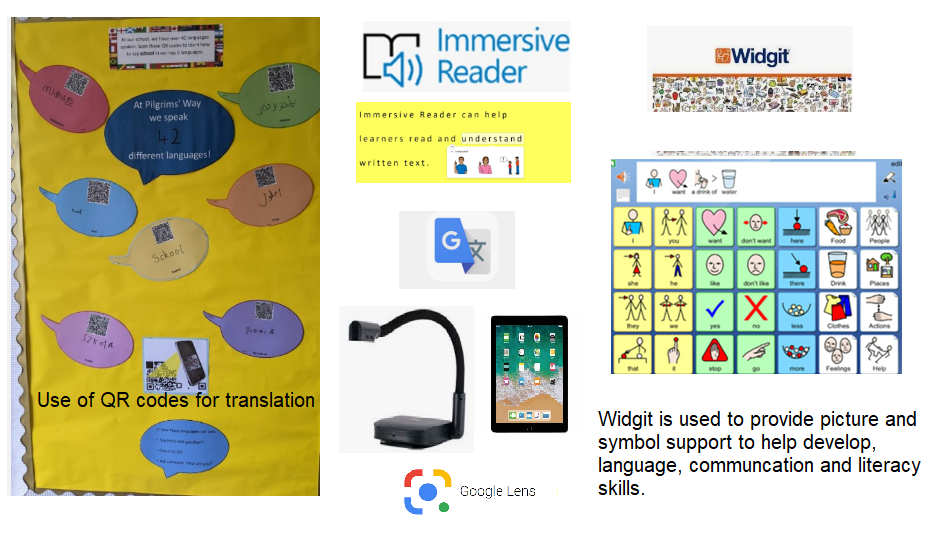
Supporting children's emotional regulation
Regulation is key to having fun, completing tasks, working effectively with others, maintaining healthy and meaningful relationships, achieving and having an overall sense of well-being. It plays a huge role in finding success in school and in life.
Parents and Carers – What can you do to help?
All the adults working with children in school are trained regularly to understand and use Colour Monster and The Zones of Regulation daily in class and around school. We encourage parents and carers to have these same discussions with children at home and to model your own feelings.
The Colour Monster
For younger children in school, we teach emotions using a story called The Colour Monster. It is important for children to learn to identify and express a wide range of feelings, while also understanding that others have feelings, too.
There are large colour monster displays containing pictures and words in each classroom, so the children can add their name card to the emotion they are feeling. At a point during the day, an adult will offer to discuss how the child is feeling, particularly if the emotion is a negative one.
The displays give children the language to help them describe and express how they are feeling which is such an important part of their emotional development.
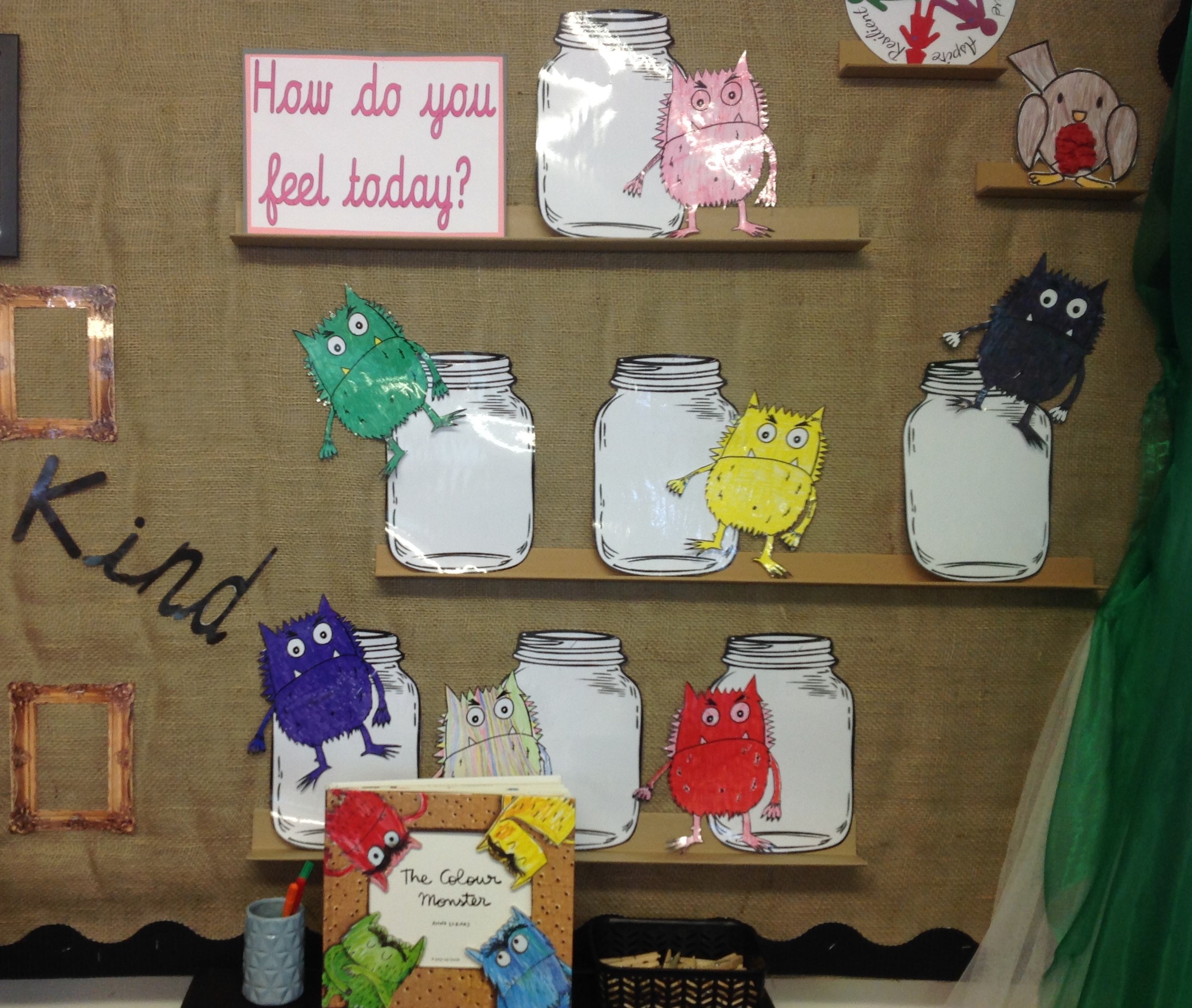
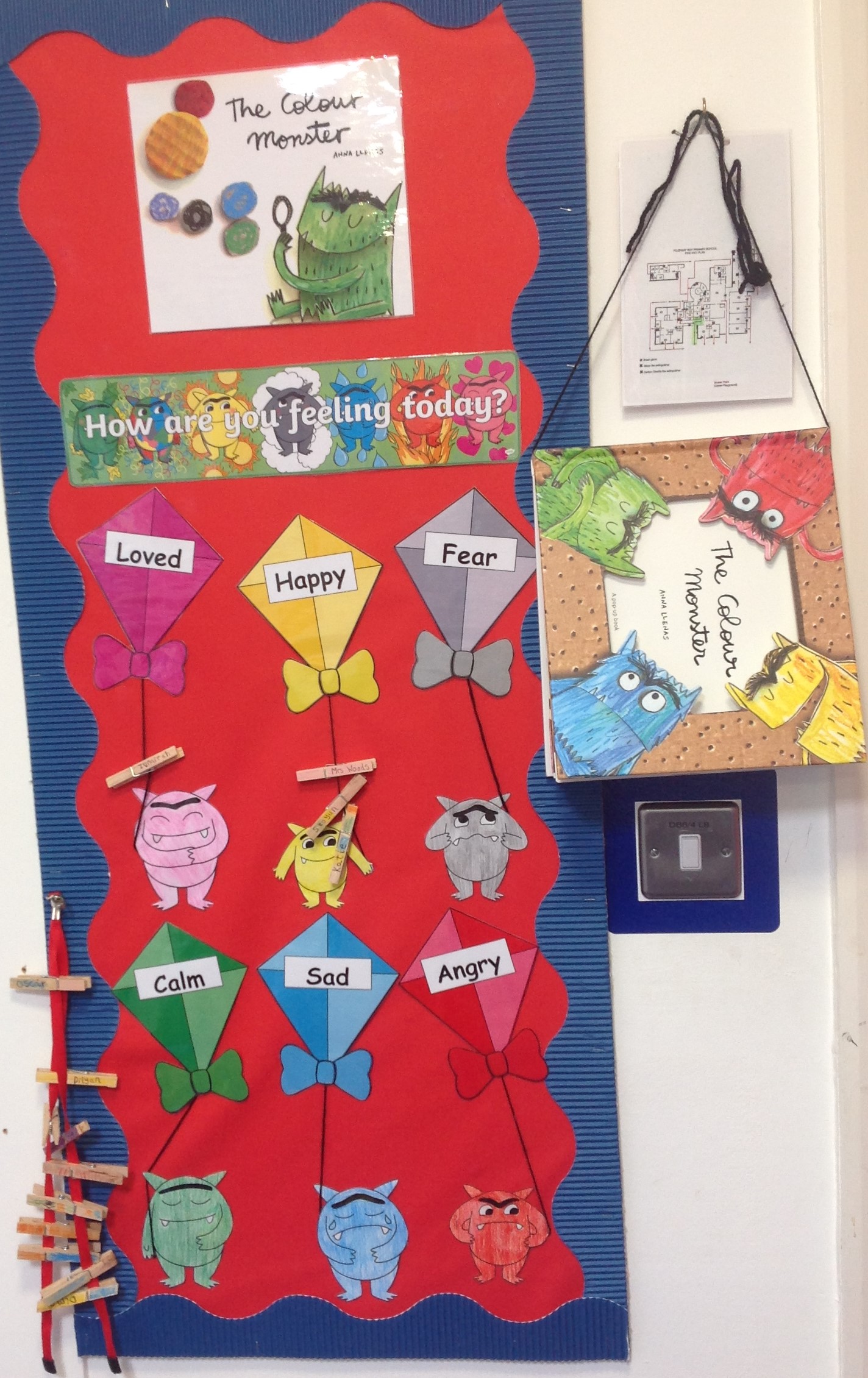
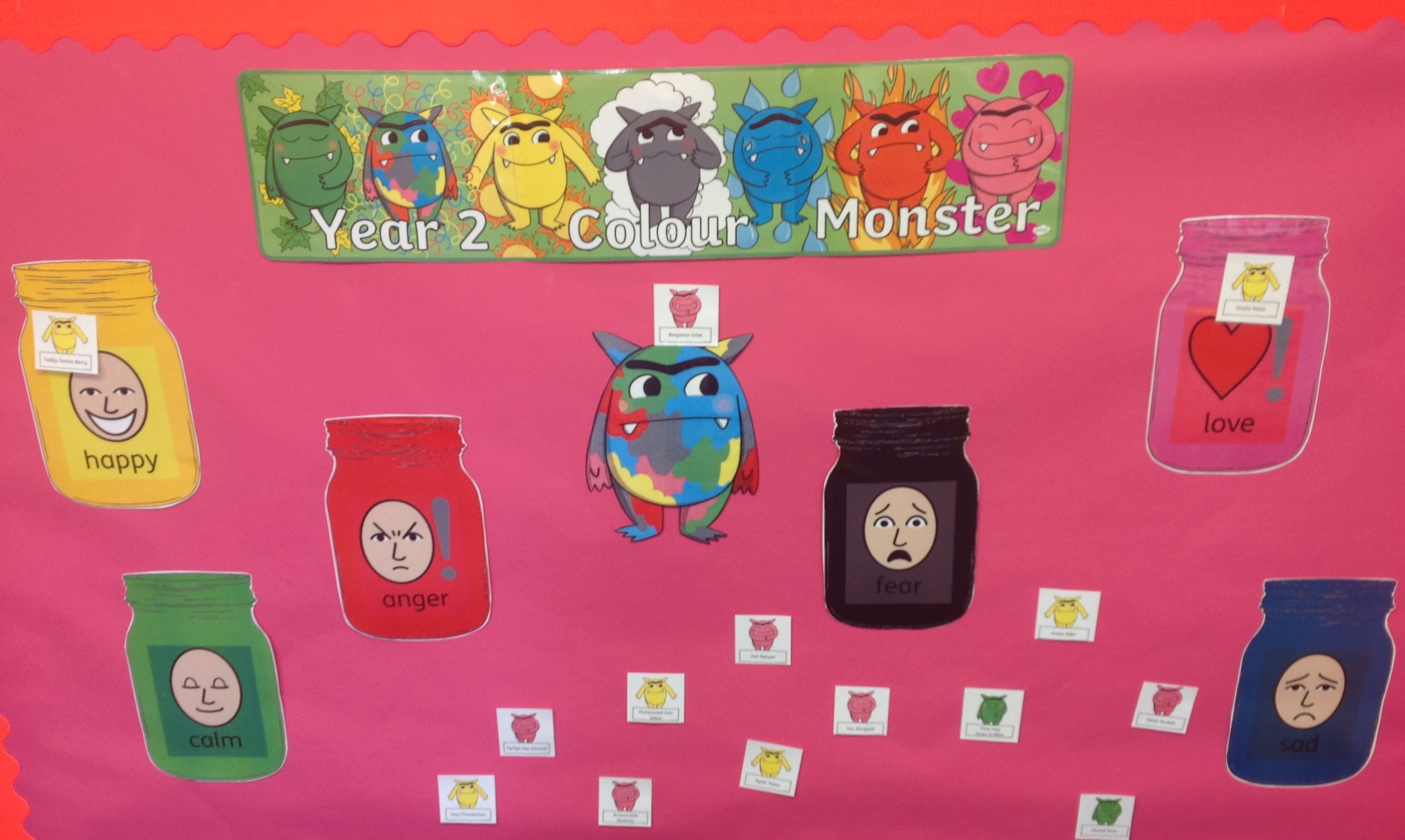
These links are for video clips of Colour Monster stories you may want to watch -
https://www.youtube.com/watch?v=IY6d1jyvmVg&t=14s The Colour Monster
https://www.youtube.com/watch?v=vj5V9tPY04Q&t=5s The Colour Monster goes to School
Zones of Regulation
For older children we teach emotions and regulation through 'Zones of Regulation'. Using The Zones Check-In provides common language and a visual system to help pupils express how they are feeling in each of the Zones and what regulation tools they might need.
The Zones of Regulation framework categorises our emotions and energy states into four colour-coded Zones:
-
Blue (low energy such as sad or tired)
-
Green (neutral energy such as calm and focused)
-
Yellow (elevated energy such as frustrated or excited)
-
Red (highest energy such as angry or overjoyed).
Adults and children of all ages move through a wide range of emotions, energy, and alertness throughout the day. All feelings and Zones are a natural part of being human.
The Zones help children to learn that everyone experiences all types of feelings and emotions. The Zones are neutral and do not communicate judgement - No Zone is bad.
Adults comment aloud about their own energy and emotions. That way, the children know it is natural that we all experience the different zones and use strategies to self-regulate.
Children are praised for identifying their emotions. Children are encouraged to share the Zone they are in and what they need to do to be 'green'.
Adults show interest about the triggers and tools pupils use to move between them.

A Zones of Regulation display in class

A 'Zones board' for use by individual pupils at school and at home
A parents guide to Language through Colour
Language through Colour (LTC)
We wanted to share a learning approach we are using called Language through Colour (LTC). You may have heard your child(ren) talk about it and seen the vocabulary in colours on the Knowledge Organisers we share with you.
What is LTC?
LTC is an inclusive approach used across the school and throughout the curriculum to support children’s language development.
How does it work?
-
We use LTC as a framework for pupils to understand and make connections with their learning.
-
Categories of words or phrases are colour coded according to the type of information they convey (e.g. action, person, doing word etc).
-
Each category is also linked to a question.

How do we use LTC in the classroom?
-
To help pupils to understand word categories e.g. nouns, adjectives, verbs, adverbs etc
-
To help pupils to build sentences both orally and written. Pupils are given prompts for information needed and the order in which to place words.
-
To help pupils to understand questions and how to answer them appropriately.
-
To help pupils to identify keywords or pieces of information from stories/events/ displays on word walls.
-
To support pupils to self assess, revisit, improve and extend their written work e.g, 'I have not added enough green words describing words/adjectives'.
Examples of Use




How Language through Colour can be used at home to support reading
Try using the prompts below when reading with your child.

